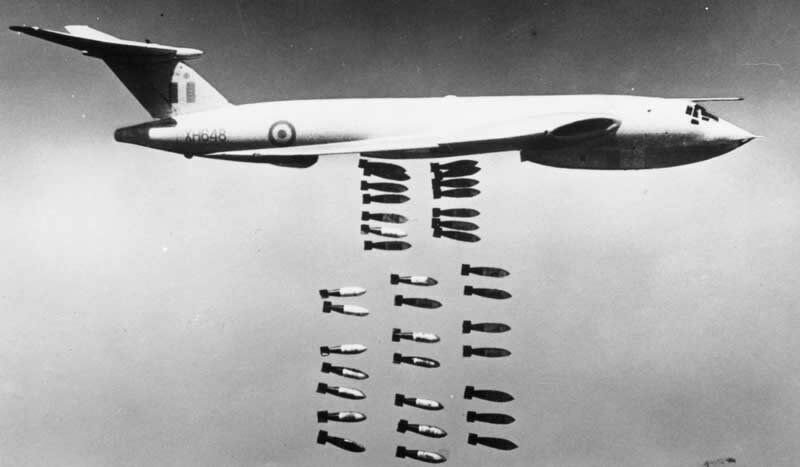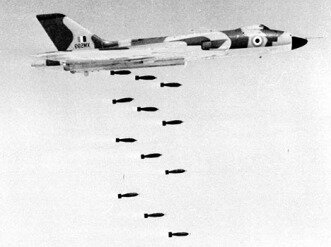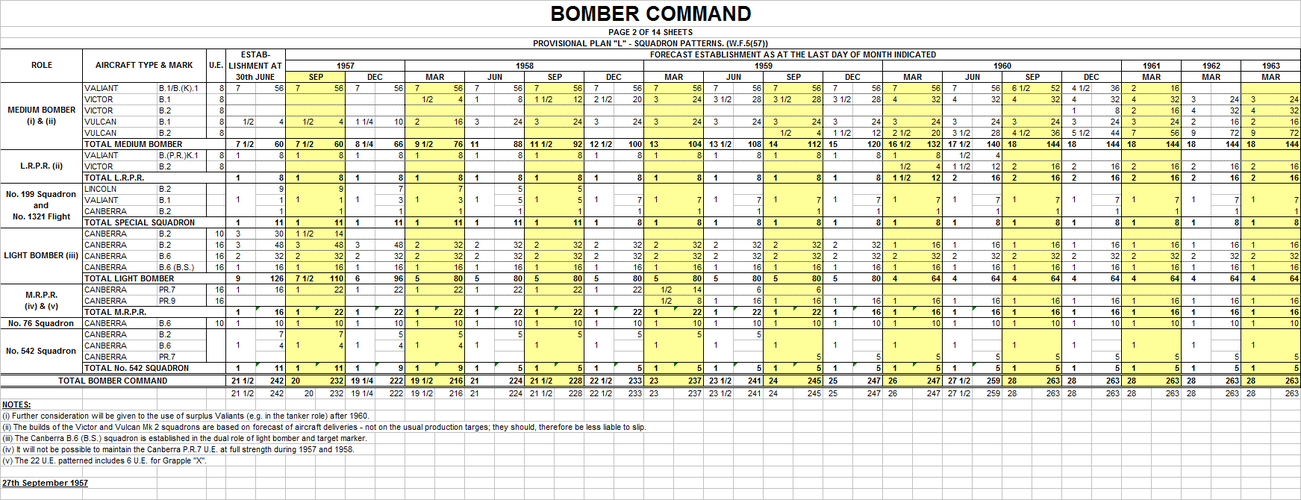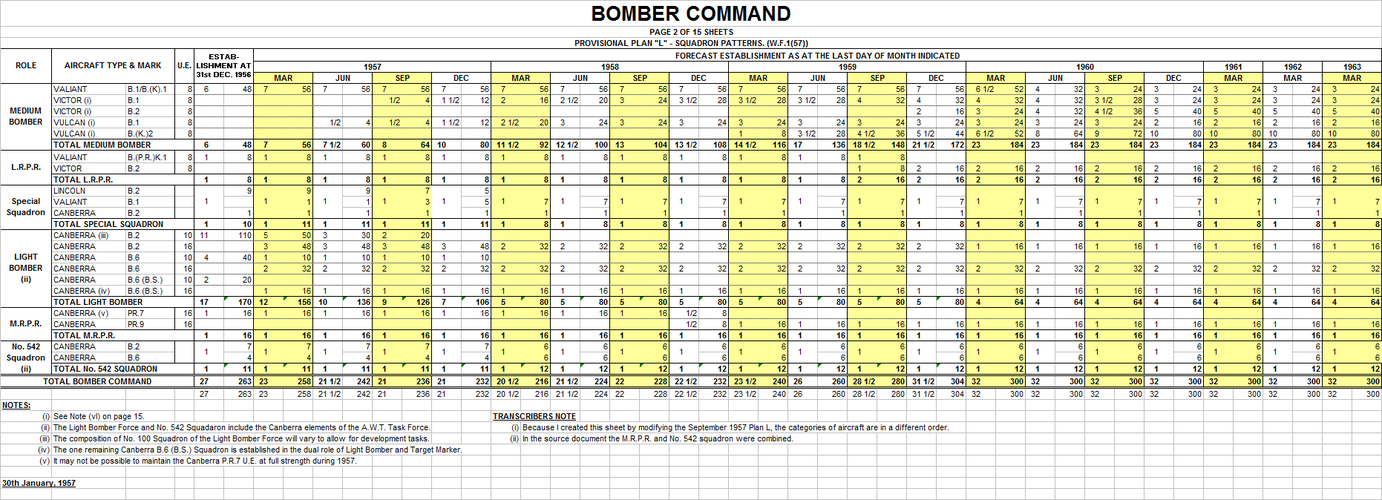Some interesting facts about US and British bombers.
- The last B-58A (number 116) and the very last B-52H(last of 744 build and still in service today !) rolled out the same day at Wichita and Forth Worth. And guess which day that was ?
October 26, 1962 - right in the middle of the Cuban missile crisis. Had WWIII started, they would have had extremely short lifespans.
This explains through Congressional procurement - B-52H and B-58A procurements were curtailed in FY61-62 and thus, production ended late 1962.
- the last Victor B2 and Vulcan B2 were also rolled out that same year, 1962 (according to that post in this thread)
The Aircraft Programmes section of the plan shows all but 5 of the Victors delivered by the end of March 1962 and all but 3 of the Vulcans delivered by the end of March 1962.
- remarquably, three years before and as they neared the end of their production, these four aircraft - Vulcan, Valiant, Hustler and BUFF - were candidates to drop WS-138A weapon: which become the Skybolt.
B-58B was screwed in June 1959, and then WS-138A design evolved in such a way, Victor lacked the ground clearance to carry it. This left Victor B2 and B-52H facing each other.
- the British build more 100 tons medium bombers in 10 years (1953-1963: 200 or more) than the Chinese build Tu-16s in 60 years (according to Wikipedia, Tu-16 / H-6 production presently stands at 100 - 120 aircraft)
- Checking Strategic Air Command versus Bomber Command reasons for wanting Skybolt is interesting.
In the US case it was somewhat an "embrassment of riches" related to Lemay and Tommy Power desire of keeping the SAC bomber fleet relevant against their own Minuteman and most importantly, against the hated USN Polaris submarines.
Just like Operation CHROME DOME, Skybolt was an atempt at turning B-52s into "flying boomers" (look, bombers can loiter and hide, too !) Skybolt was to be SAC bombers very own Polaris.
In the British case things were much more on the edge.
@NOMISYRRUC detailed analysis shows how much of a colossal effort development of the V-bomber fleet was for Great Britain; and how it peaked circa 1962-64.
After Blue Streak proved obsolete and was canned in 1959-60, Skybolt was seen as a golden opportunity to use that enormously expensive bomber fleet that was just peaking in size in 1962.
In the British case, while Mountbatten for all his flaws had correctly guessed that Polaris was superior and tried to get it, in 1960 (he failed) and in Nassau (he won) Polaris wasn't THAT obvious either in 1959-60 or even in 1962.
- the V-bomber fleet had just peaked in 1962-64
- nuclear subs amounted to 3 to 4 attack subs
- most importantly, for the Americans any Polaris for Europe (France, GB, Italy, Germany, any other country) would be attached to
NATO MLF: Multi-Lateral-Fleet, with dual-keys.
De Gaulle hated the idea for obvious reasons, but MacMillan equally hated it for the same reasons: Britain independant nuclear deterrent would be screwed for NATO dual-keys weapons.
That was the very core of Nassau hard bargain: the Americans (Kennedy, McNamara) compromised (screwing the two Deans: Archeason and Rusk in passing) and accepted that the British could take control of their Polaris in case of grave crisis - Falklands, cough, Suez - COUGH, COUGH !
It is no surprise the British were incensed by McNamara decision to screw Skybolt: the two options left were
- toothless "B2 V-bombers" (Blue Steel was not a viable long-term weapon)
- NATO-attached Polaris with dual-keys
McNamara however cancelled Skybolt for "reasonable" reasons, basically it brought no additional value compared to Polaris while being insanely expensive, complex, and failure prone. It wasn't worth the fight nor the money - not for the Americans at least ! For the British of course, that was a different matter.
Remarquably, both McNamara and Thorneycroft blundered in this case.
McNamara really did not thought he would throw the British in disarray.
Thorneycroft was seemingly unaware of the grave threat on Skybolt.
And of course the Cuban Missile Crisis had everybody extremely busy in October.
The Nassau crisis really was as brief as it was violent: started early November, peaked in December, mostly solved by January.





